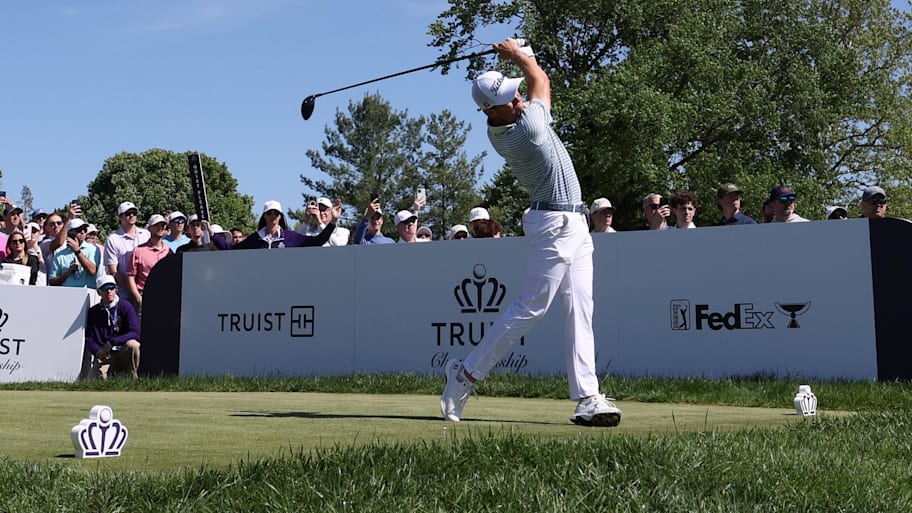New PGA Tour CEO Brian Rolapp said the circuit wants to create events that matter. But at what cost?
With the Tour revealing its 2026 schedule this week, the biggest change was the addition of a new, signature event at Trump Doral in Miami, where the Tour played annually from 1962 to 2016.
“I think everyone is excited about returning to a course we have decades of experience with that course,” Rolapp said Wednesday at East Lake, site of the season-ending Tour Championship. “I think the players are excited. So I think we’re looking forward to bringing that back as a PGA Tour tradition.”
Now, not only are there nine signature events next season, one more than in 2025, but with where Doral falls on the schedule in early May, it’ll be in the midst of a grueling six-week stretch that will look like this: the Masters, RBC Heritage (signature event), Zurich Classic, Miami Championship (signature event), Truist Championship (signature event) and the PGA Championship.
Playing signature events, which have a $20 million purse and no 36-hole cut, the week before and/or after a major is a controversial topic among Tour pros. Yet, some players won’t give up the guaranteed payday a signature event offers.
“As a golfer, it’s great to be in those events,” Harris English said. “I’m going to play all of them. It’s a good time to have your game in the right spot and playing a lot of good golf. So that’s kind of how I look at that condensed schedule right there.”
But for the Tour’s rank-and-file players, it could mean an extended period where they fail to get starts under their belt.
“It’s going to suck not being in those events,” English said, “but kind of how the PGA Tour has set itself up is if you want to get in those tournaments, you’ve got to play good. You’ve got to beat people. You’ve got to play better. I was a little bit in that position last year.”
With no penalty for skipping a signature event, some of the game’s top names might opt out of them, which hurts the Tour’s goal of having all the stars teeing up against each other. Rory McIlroy, for example, hasn’t played the RBC Heritage in recent years, and Scottie Scheffler has used the Truist Championship as an off week.
“The luxury of being a PGA Tour player is we are free to pick and choose our schedule for the most part,” McIlroy said, “and I took advantage of that this year and I’ll continue to take advantage of that for as long as I can.”
In the two weeks leading up to next year’s PGA Championship, Justin Thomas, too, would consider not playing.
“I go back and forth on that,” he said. “I’m a believer in the sense of all of us playing in all these events is kind of the purpose of them. But at the same time, yeah, it’s something I’ve—I look at it in the sense of if there’s a particular golf course or there’s something to where I don’t feel like I can play well.”
Despite the cluster, though, Thomas sees positives in adding the Doral event to the calendar.
“I like the fact that the Tour is looking at it in the sense of here we are, this is what we have this year, and we’re just going to keep trying to change it for the better and better and so on and so forth,” he said, “as opposed to just putting it off until however many years until we feel like we have the perfect model, perfect fit kind of thing.”
One part of the schedule working in the Tour’s favor is that it doesn’t require players to fly across the country each week. Those six events between the Masters and PGA will be in Georgia, New Orleans, Florida, North Carolina and ending in Philadelphia.
“It’s quite a bit of a workload for the players to play that much golf in that stretch, but I think it’s not as if we’re having to travel halfway around the world to do it,” McIlroy said. “These are all pretty easy stops on the East Coast for the most part.
“But I think it’ll be good. It’ll be a good schedule, and I think if the Tour and the top players get off to a good start, I think that builds momentum for the Tour, and I think the Tour can just sort of ride that momentum through that stretch.”
But another downside is that the non-signature tournament’s fields will suffer, and their value will diminish. On the flip side, some stars that are having lackluster seasons might add them to their schedule in hopes of improving their standing on the season-long FedEx Cup points list, which is also a pathway to earning a spot in the signature events.
However, love it or hate it, nothing is set in stone past 2026.
“It’s tough,” Thomas said. “I definitely understand [the schedule concerns]. I think it has felt—it definitely has felt a little bunched over the past couple years, honestly. I’m not sure how different it could feel, you know what I mean? But it’s something that it’s always a work in progress.”
This article was originally published on www.si.com as Despite ‘Bunched’ Schedule, PGA Tour Stars See More 2026 Signature Events As Positive.
